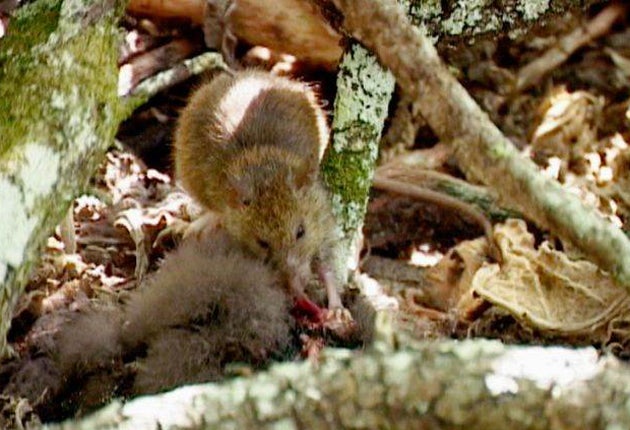Rats targeted in mass poisoning to save endangered birds

British scientists are to mount a £1.7m operation to save a seabird from extinction by eradicating rats from one of the world's most remote islands.
Nearly 50 million pellets of rat poison will be dropped on one of the Pitcairn Islands – the last British Overseas Territory in the Pacific – to safeguard the future of the Henderson petrel, which is found nowhere else.
Most of the petrels' chicks are being eaten alive by the rats with which the island is infested. The population has tumbled to a fraction of its historic levels and may soon have disappeared. As a result, the United Nations has officially warned Britain that Henderson Island was in danger of losing its World Heritage Site status, granted in 1988 due to its position as one of the few atolls in the world whose ecology has been "practically untouched by a human presence".
In fact, the island was inhabited by Polynesian settlers several hundred years ago, who subsequently left for reasons that remain a mystery. But they brought with them a population of the non-native Pacific rat, which feeds on the island's wildlife and has already resulted in the extinction of four endemic bird species – three doves and a sandpiper – a fact only apparent by the bones which are left behind.
Now the remaining birds are all at risk, including four endemic species of landbird, the Henderson reed-warbler, the Henderson crake, the Henderson fruit-dove and the Henderson lorikeet. But most threatened are the seabirds, four species of ground-nesting petrels – dove-sized relatives of the albatross – of which the endemic Henderson petrel presents the crucial concern.
Its population, once thought to number in the millions, is down to about 16,000 pairs and each year more than 25,000 petrel chicks (95 per cent) meet a gruesome death by being eaten alive by the rats, leaving very few to survive to adulthood.
The Royal Society for the Protection of Birds (RSPB) is mounting the operation, due to take place next August, providing the full funding of £1.7m can be found for the complex project, which will involve contractors sailing from New Zealand on a ship carrying two helicopters which will drop the pellets. More than £1m has already been raised and last week the Department for Environment, Food and Rural Affairs awarded £200,000 to the scheme, leaving a further £400,000 to be found.
Most of Henderson is a rocky coral plateau covered in dense vegetation, making it impossible (and potentially very damaging environmentally) to lay the rat bait by hand, said Jonathan Hall, the RSPB co-ordinator for the project. The bait – cereal pellets containing an anti-coagulant called brodifacoum – will be scattered by helicopter.
The amount would be 98 tonnes, Mr Hall said which, at 500,000 per tonne, equals 49 million pellets. The whole island will have to be covered. Should a single pregnant rat be left the population might be rapidly restored.
It is not thought the rat poison will be consumed by other wildlife and once the rats are removed, the RSPB believes the populations of all the native birds will rise as they are freed from competition and predation by the non-native rodents.
"Henderson will be the largest tropical or sub-tropical island in the world to be cleared of rodents," said Mr Hall. "Once cleared, we could also find new species of insect, which are currently at population levels which are too low to be detected due to rat predation – and who knows what other secrets the island may still hold?"
Invasive rats, often coming from ships, are among the greatest threat to island wildlife across the world and are thought to be responsible for numerous extinctions and declines, especially amongst seabirds, as they prey on eggs, chicks and adults.
But over the past 20 years, techniques of large-scale rodent eradication have been developed and rats have now been successfully cleared from 284 islands across the world, many in Australia and New Zealand, allowing native wildlife to prosper again.
Join our commenting forum
Join thought-provoking conversations, follow other Independent readers and see their replies
54Comments